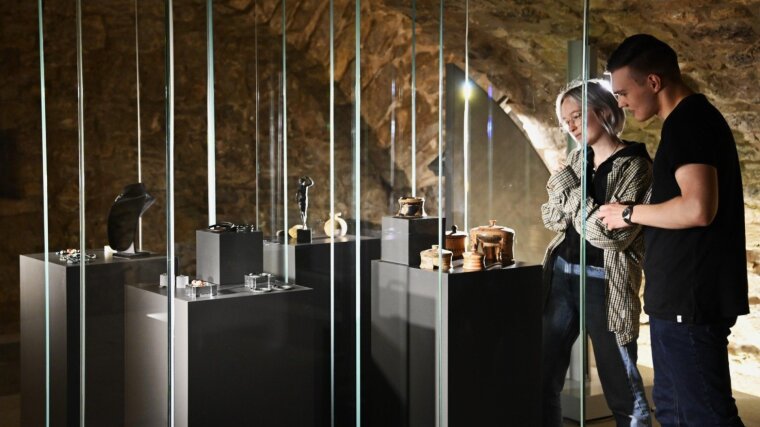
- Liberty
Published: | By: Stephan Laudien
Source article
How did distinguished Greek women and men dress in ancient times? What hairstyles were "en vogue", what jewellery was fashionable? The special exhibition "ENDYMATA: Fashion in Antiquity" takes a look at fashion as a timeless phenomenon. The show will be on display from 30 October in the Collection of Classical Antiquities at Friedrich Schiller University Jena (Fürstengraben 25). It is open on Fridays from 10 am to 12 noon and Sundays from 2 pm to 4 pm, closed on public holidays. Further guided tours are available on request: antikensammlungen@uni-jena.de. Admission to the exhibition is free of charge.
Clothing was originally made in the home
"Fashion already existed in Ancient Greece, but it didn't yet have its own term," says Dr Dennis Graen, curator of the Collection of Classical Antiquities. The term "endymata", the Greek word for clothing, was therefore chosen to give the exhibition its title. Hardly any artefacts of this clothing have survived; the organic materials have long since rotted away. Nevertheless, it is possible to draw specific conclusions about the fashion trends of the past: "Many of the ancient statues show us the clothing of the time and also allow us to draw conclusions about hairstyles and decorative accessories," says Dennis Graen. Works of art and everyday objects also reveal which colours were popular. One part of the exhibition is dedicated to the production of clothing; for example, a loom, dyeing plants and dyeing techniques are on display. The exhibition items include purple snails from the collection of the Phyletic Museum and dye plants from the Herbarium Haussknecht. One of the plants on display was collected by Carl Haussknecht himself in Greece in 1885. "Most of the clothing was made in the household itself," says Graen. In addition to sheep's wool, linen and hemp fibres were used and dyed with woad, saffron and other plants. The knowledge about the fashion of the past and the associated manufacturing techniques was compiled by students in a course. This also gave rise to the concept for the special exhibition, which begins in the Bronze Age and extends to the middle of the first millennium AD.
Thematic guided tours as part of the exhibition's accompanying programme
Another facet of the exhibition is jewellery and utensils for personal hygiene. Various garment clasps, so-called fibulae, are on display, which were also subject to rapidly changing fashions. This makes them a good dating aid, says Dr Graen. Rings, bracelets and earrings made of gold, silver and bronze demonstrate the skills of the goldsmiths, while make-up utensils, hairpins, combs, mirrors and razors reveal that the desire for embellishment is timeless, just like fashion.
The exhibition opens on Wednesday, 30 October at 6 pm. Several themed guided tours are planned as part of the accompanying programme. For example, the exhibition will be open on 22 November for the Long Night of Science.
